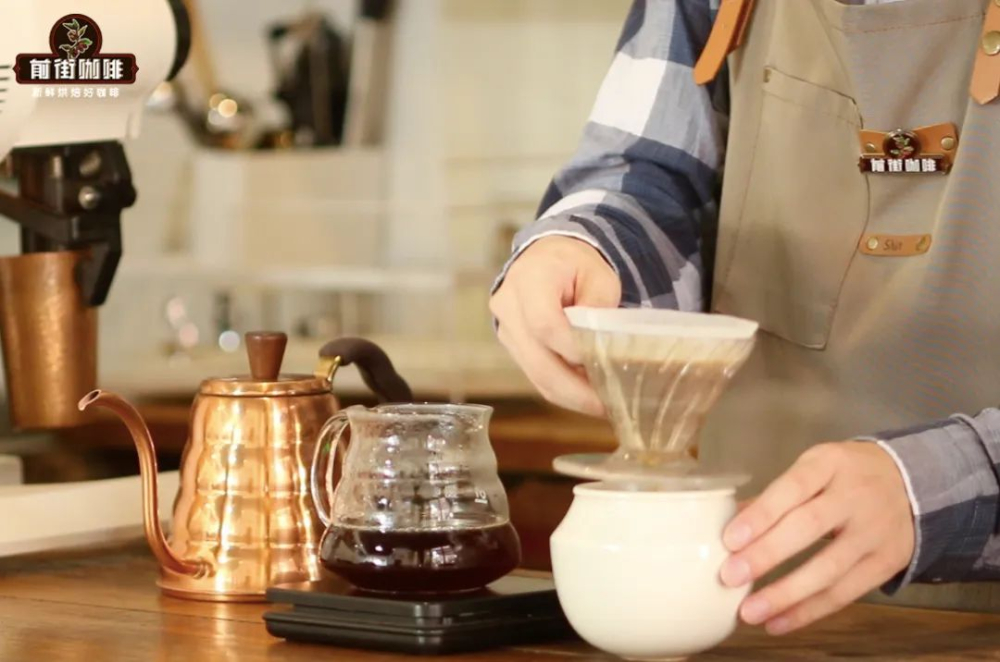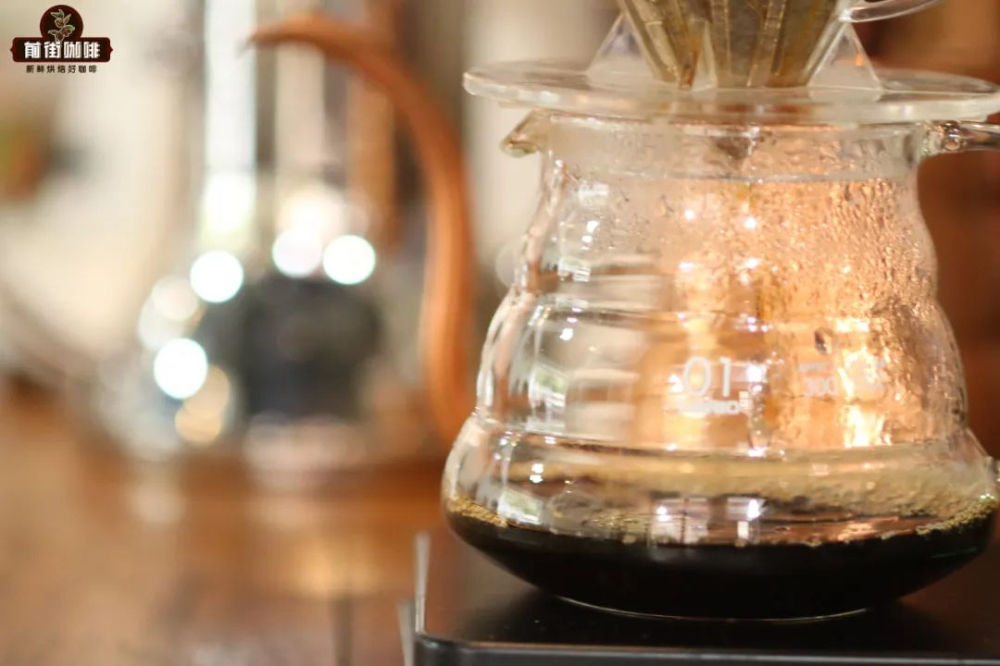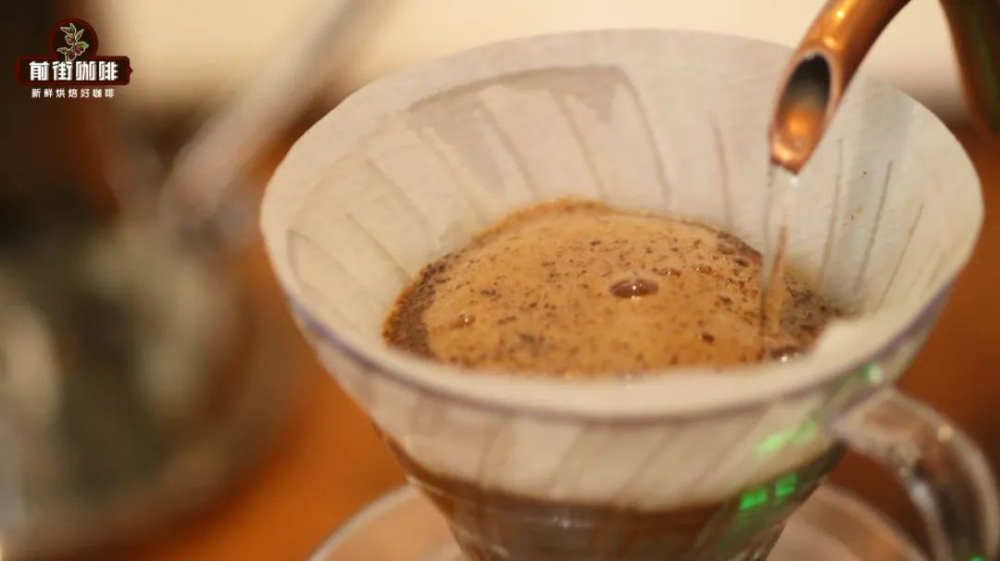Is it difficult to learn to make coffee by hand? Introduction to the characteristics of grinding degree and water temperature ratio of brewing parameters of hand-brewed coffee
Coffee metaphysics has long been a general discussion in the coffee circle, among which flavor metaphysics and brewing metaphysics are the most discussed. As soon as we enter the front street, we will help us uncover the surface of metaphysics and reveal the science behind our backs.
Flavor metaphysics generally means that when you drink a cup of coffee, you only think it is bitter, while the friend next to you can tell dozens of flavors, which directly makes you wonder about life-"are we drinking the same kind of coffee, or when I drink coffee?" and you ate a fruit dinner behind my back. "

"isn't coffee supposed to taste like coffee? does a cup of black coffee really have so many flavors? or is it that merchants deliberately make up a bunch of flavors to fool me in order to raise the price?" In fact, it is not. More than a decade ago, scientists have discovered that the fruit flavor in coffee comes from esters, and caramel sweetness comes from furan compounds. Recent advances in analytical strategies for coffee volatile studies: Opportunities and challenges in Volume 388 of Food Chemistry, published in April this year, clearly lists the specific flavors corresponding to more than 200 flavor compounds. For example, we taste pineapple in coffee, which is shown by methyl isovalerate and ethyl isovalerate in coffee, rose fragrance is expressed by phenylethanol, and sweet flavors such as caramel, brown sugar, maple sugar and marshmallow are expressed by furanone. Therefore, the flavor of coffee we taste is based on something, not metaphysics. Another coffee metaphysics is brewing metaphysics. One of the most reflected is the technique, such as the bitter theory at the end, that is, when the coffee is washed to the end, there is about 20ml left in the filter cup until the coffee liquid does not let it finish, but remove it, because the tail liquid is the source of bitterness.

Another way is that different ways of filling water can show different flavors, such as using the same coffee beans, I can flush out the citrus flavor of coffee this way, and the strawberry flavor of coffee that way. Maybe everyone uses the same way of cooking, why do I drink worse than you? Although do not understand, but think this is very powerful friends will feel, "very impressive, very mysterious ah, very unfathomable ah!" In fact, if you spend more time understanding the logical relationship behind coffee extraction, you will find that everything that looks mysterious is regular and can be controlled. Qianjie believes that the factors affecting hand-brewed coffee are coffee beans, grinding degree, powder-water ratio, water temperature, time, human hand (technique). These parameters relate to each other, influence each other, and finally brew out the flavor of coffee. Among these factors, coffee bean, powder-water ratio and water temperature are the easiest to grasp, followed by grinding degree and time, and finally the technique.

Good coffee beans are the most basic, the good here does not mean expensive coffee beans, but without major defects, in the appreciation period of coffee beans, it is not difficult to do this. Don't underestimate the date. Some friends asked why the beans in Qianjie didn't flush well, and asked around that the coffee beans were not grown well or had been kept for too long, and the flavor ran out. In general, the best flavor of coffee beans is about 4-30 days. The ratio of powder to water and water temperature are the easiest factors to control, because they are concrete numbers, which can be accurately judged by electronic scales and thermometers, so it is difficult to have large deviations in actual operation. Only with a correct understanding of these two parameters, there will be no mistakes. "here the front street will not repeat, detailed click powder water ratio, water temperature" grinding degree is not more difficult to grasp our understanding of it, in the grinding thickness requirements, Qianjie recommends the use of No. 20 sieve for calibration. Medium-to-light roasted coffee beans will use a thickness of 75-80%, and medium-and deep-roasted coffee beans will use a thickness of 70-75%.

But the difficulty of grinding lies in the quality of the hardware of the grinding machine. The grinding quality of the bean grinder used by some friends is not very good, there are many fine powder and coarse powder, and the particle size difference between fine powder and coarse powder is also large. In this case, if you use the thickness of 80% of the screening rate, it is very easy to take too long to extract. Therefore, when making coffee, we should learn to judge the cause of the problem, and then solve it one by one. Like this problem, there are two solutions: first, to screen the fine powder to narrow the powder diameter gap; second, to adjust the roughing and grinding to avoid soaking for too long. In hand brewing coffee, the human hand is the most unstable factor, other factors can be debugged to set a reasonable parameter, but it is difficult for the human hand to ensure exactly the same brewing water every time. Therefore, the easiest way to brew is to let people's hands reduce errors, which is why Qianjie has always recommended the use of three-stage brewing coffee.

The reason why the coffee tastes like this can be found in these factors. For example, why is this coffee sour? Because the coffee beans used in brewing are lightly roasted. Why does the end of the coffee taste bitter and should be removed? Because you use the wrong parameters, such as too fine grinding or too much fine powder, high temperature of brewing water, too much water injection, or too much stirring around water injection. If the correct parameters are used, the problem of bitterness at the end will not occur. Removing the tail is just a remedy.
Important Notice :
前街咖啡 FrontStreet Coffee has moved to new addredd:
FrontStreet Coffee Address: 315,Donghua East Road,GuangZhou
Tel:020 38364473
- Prev

How to adjust the Grinding degree of extracted Italian Coffee
Whether it is hand-brewed coffee or espresso, the degree of grinding is the most important parameter in coffee extraction, and it is also the most difficult to grasp the accuracy. Very often, we can only know that the grinding degree of espresso is much finer than that of hand-brewing, but there is no easy-to-understand data to tell you how detailed it is.
- Next

What is the meaning of high concentration and low extraction of hand-brewed coffee? effect of ratio parameters of dripping coffee powder on flavor
Here we come. Today, Qianjie will share with you the idea of a brewing method-- high concentration and low extraction. This brewing method can minimize the bitterness of coffee and make coffee achieve a good flavor performance. What is high concentration and low extraction? Here in front of the street is a brief introduction, everything still has to be extracted from this "golden cup."
Related
- Beginners will see the "Coffee pull flower" guide!
- What is the difference between ice blog purified milk and ordinary milk coffee?
- Why is the Philippines the largest producer of crops in Liberia?
- For coffee extraction, should the fine powder be retained?
- How does extracted espresso fill pressed powder? How much strength does it take to press the powder?
- How to make jasmine cold extract coffee? Is the jasmine + latte good?
- Will this little toy really make the coffee taste better? How does Lily Drip affect coffee extraction?
- Will the action of slapping the filter cup also affect coffee extraction?
- What's the difference between powder-to-water ratio and powder-to-liquid ratio?
- What is the Ethiopian local species? What does it have to do with Heirloom native species?

